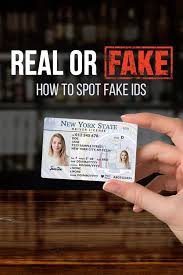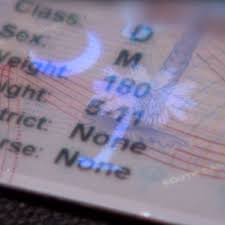Realistic holograms and security features
Table of Contents:
- Introduction: From Optical Novelties to Security Assets
- Understanding Realistic Holograms
- 2.1 What Makes a Hologram "Realistic"?
- 2.2 The Technology Behind High-Fidelity Holography
- The Intersection of Holograms and Security Features
- 3.1 How Holograms Combat Counterfeiting
- 3.2 Role in Authentication and Identification
- 3.3 Smart Applications: IoT and Beyond
- Key Product Features and Technologies
- 4.1 Types of Holograms Used in Security
- 4.2 Holographic Printing Techniques and Materials
- 4.3 Customization Options for Businesses
- Market Analysis and Growth Opportunities
- 5.1 Current Market Trends in Holographic Security
- 5.2 Regional Insights: Where Holographic Security is Booming
- 5.3 Emerging Sectors and Industries Adopting Holography
- Target Audience and Industry Applications
- 6.1 Government and Legal Institutions
- 6.2 Financial Services and Anti-Fraud Measures
- 6.3 Pharmaceutical and Medical Industries
- 6.4 Retail and Consumer Goods
- 6.5 Luxury Brands and Document Authentication
- Challenges and Limitations
- 7.1 Production Costs and Scalability
- 7.2 Consumer Awareness and Adoption
- 7.3 Technological Limitations
- Future Prospects: Innovation at the Horizon
- 8.1 Trends in 3D, AR, and Smart Holography
- 8.2 Collaboration Between Industry Leaders
- 8.3 Policy and Regulatory Impact
- Conclusion: The Next Step in Security Solutions
1. Introduction: From Optical Novelties to Security Assets
Holographic technology has captivated imaginations for decades—popularized by science fiction films and public exhibitions. However, the transition from aesthetic novelty to practical security applications represents a groundbreaking shift. No longer limited to static visual effects, realistic holograms now possess the capacity to deliver high-level security, authentication, and anti-counterfeiting protection.
In an interconnected world where digital fraud and counterfeit products are on the rise, industries seek innovative solutions that go beyond traditional approaches. Realistic holograms, due to their intricate design and difficulty in replication, present a formidable barrier against counterfeiters. Additionally, with the rapid advancements in IoT-enabled security features, holographic elements are becoming an essential part of secure ecosystems.
This article delves into the latest innovations within this domain and explores the broader market trends that make holographic technology a key player in the future of security solutions.
2. Understanding Realistic Holograms
2.1 What Makes a Hologram "Realistic"?
The defining feature of a realistic hologram is its three-dimensional appearance that mimics real objects with precision. Unlike traditional holograms that may appear static or two-dimensional, realistic holograms use advanced techniques such as lightfield recording and holographic displays to create more dynamic, vivid visuals. These holograms can change perspective based on the viewer’s position, simulating the parallax effect.
2.2 The Technology Behind High-Fidelity Holography
High-fidelity holograms are developed using laser interference technology, where coherent light waves interact to form patterns. Digital holography and computational imaging algorithms are integrated into the process, enabling the creation of accurate, photorealistic holographic representations. This precision makes them ideal for security use cases, as the level of detail is difficult to reproduce, ensuring a high degree of authenticity.
3. The Intersection of Holograms and Security Features
3.1 How Holograms Combat Counterfeiting
Counterfeiters increasingly mimic official documents, currency, and high-end products. Holographic seals, labels, and emblems are difficult to replicate without access to specialized equipment and materials, making them a key anti-counterfeiting tool. These holograms can incorporate dynamic effects such as color shifts and microtext, further enhancing security.
3.2 Role in Authentication and Identification
Holographic elements are integrated into identity cards, passports, and banknotes, adding a visual layer of security. Authentication becomes easier when users or machines verify such elements through visible and hidden holographic patterns. Some holograms also contain QR codes or embedded chips, linking them with digital databases for advanced tracking.
3.3 Smart Applications: IoT and Beyond
Holograms, when integrated with IoT-enabled systems, offer new capabilities. Examples include contactless authentication for access control, as well as blockchain-powered holographic tracking that ensures the provenance of luxury goods or pharmaceuticals. This intersection of physical and digital technologies adds an additional layer of security.
4. Key Product Features and Technologies
4.1 Types of Holograms Used in Security
- 2D/3D Combination Holograms
- Volume Holograms
- Embossed Holograms with Light Diffraction Patterns
4.2 Holographic Printing Techniques and Materials
High-grade security holograms are printed using laser-etched foils, thermoplastic materials, or polymers. Embossing methods add microscopic layers, making counterfeiting exceedingly difficult.
5. Market Analysis and Growth Opportunities
5.1 Current Market Trends in Holographic Security
- Increased demand for anti-counterfeit solutions in developing economies.
- Growing application in pharmaceutical packaging due to regulatory requirements.
- Rise of holographic wallets and smart packaging as a part of the e-commerce boom.
6. Target Audience and Industry Applications
6.1 Government and Legal Institutions
Governments leverage holographic security in ID cards, passports, and official seals to prevent forgery.
6.2 Financial Services and Anti-Fraud Measures
Banks integrate holograms into credit cards and currency to secure transactions and limit fraud.
7. Challenges and Limitations
- Production Costs: Developing high-quality holograms can be expensive, impacting scalability.
- Consumer Awareness: Some consumers may not recognize or trust holographic security elements.
- Technological Constraints: Current hardware limitations restrict the use of dynamic 3D holograms in everyday scenarios.
8. Future Prospects: Innovation at the Horizon
8.1 Trends in 3D, AR, and Smart Holography
Innovations in augmented reality (AR) will further enhance holographic security by combining virtual overlays with physical holograms.
9. Conclusion: The Next Step in Security Solutions
Realistic holograms are no longer confined to artistic expression but are becoming integral to security systems. Their role in preventing counterfeiting, enabling authentication, and driving IoT-powered security solutions marks a transformative moment. As industries adapt to new challenges, holographic technology offers a dynamic solution that bridges the physical and digital worlds, ensuring both trust and safety in the future.
 Online ID services
Online ID services
 Realistic holograms and securi
Realistic holograms and securi
 Scannable fake ID
Scannable fake ID
 Identification solutions
Identification solutions